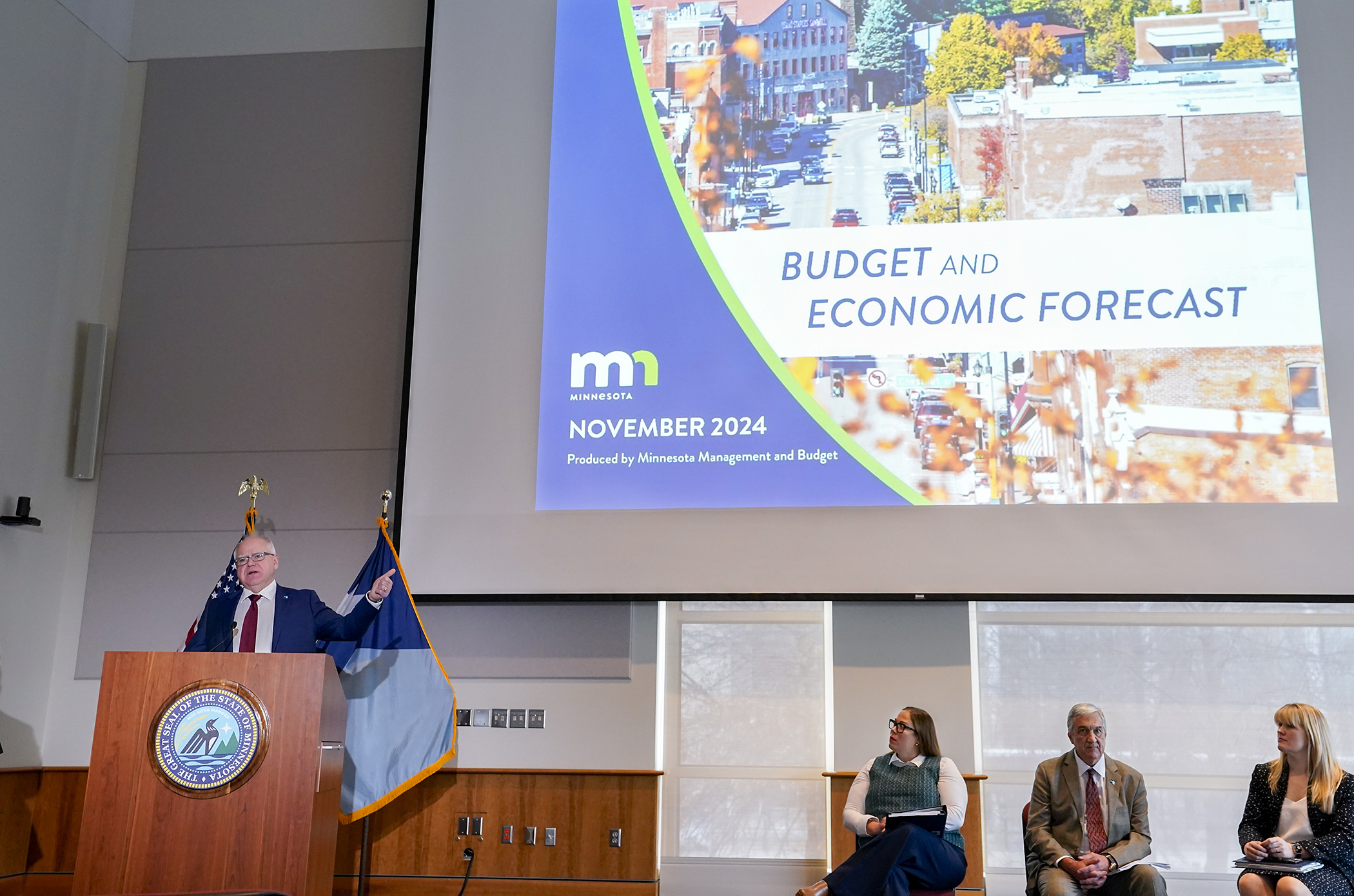Work ahead for conference committee reconciling omnibus agriculture, broadband and housing bill
Noting the work ahead due to handling three topics, a conference committee got to work Monday to reconcile the differences in the omnibus agriculture, broadband and housing supplemental finance and policy bill.
The committee received a walkthrough of HF4366, which includes differences of $180 million in housing appropriation changes in fiscal year 2023 and $185 million in the next biennium. Differences in agriculture and broadband appropriation changes are $76.4 million in fiscal year 2023 and $7.8 million in the following biennium.
The Senate version doesn’t include any additional funding in fiscal years 2024 and 2025 for any of the three areas.
[MORE: View a spreadsheet of the differences]
The House proposal, sponsored by Rep. Mike Sundin (DFL-Esko), features more robust supplemental funding, while the Senate version is focused more on statutory changes. Sen. Torrey Westrom (R-Elbow Lake), the Senate sponsor, offered caution on funding due to 2022 not being a regular budget year.
“Keep in mind, this is our supplemental budget,” Westrom said. “In years without a surplus, we probably wouldn’t even be looking at doing a supplemental budget. So, we want to be cautious to not get overcommitted as well because good times are often followed by bad times. ... Of course, there are some policies we need to look at and what can we do to keep agriculture strong. It’s an important part of our economy.”
A look at housing
Changes to Minnesota Housing in the House bill would be $230 million. The Senate would add $50 million.
Some of the major housing appropriations in the House proposal are:
- $100 million in community stabilization through naturally occurring affordable housing;
- $50 million for first generation homebuyers assistance, including a pilot down payment assistance program;
- $20 million for the Minnesota Housing challenge program, which aims to provide affordable permanent rental housing;
- $14 million for family homelessness prevention;
- $10 million to the Housing Trust Fund for rental assistance; and
- $10 million for the Homework Starts with Home program.
The Senate doesn’t fund any of those programs. It includes $35 million for homeownership investment grants and $10 million for a workforce homeownership program.
“Housing is a crisis,” said Rep. Alice Hausman (DFL-Falcon Heights), noting the increase in evictions after RentHelpMN came to a close. “That means there are a lot of vulnerable people who are evicted from their current home and with already no sufficient supply of affordable housing there will be many more homeless people as a result. That’s the crisis we face and I hope that’s always before us as we do our negotiations.”
There are also several policy differences.
Some of the major House proposals are:
- modifying the Homework Starts with Home program;
- establishing a lead-safe homes grant program;
- authorizing the issuance of $400 million in housing infrastructure bonds;
- establishing a community stabilization project;
- establishing a strengthening supportive housing model program; and
- making several changes to landlord-tenant provisions.
Some Senate proposals include:
- limiting the governor’s emergency powers to prohibit or delay eviction proceedings;
- establishing reporting requirements for several projects;
- establishing a manufactured housing mortgage financing and down payment assistance program;
- removing exceptions to statewide prohibition of rent control; and
- prohibiting Minnesota Housing grantees from using grant funds to hire lobbyists.
[MORE: View a side-by-side comparison of housing portion]
Agriculture differences
The House would appropriate $53 million in fiscal year 2023 to the Department of Agriculture and $3.4 million to the Agricultural Utilization Research Institute.
The Senate would appropriate $4.7 million to the Agriculture Department in fiscal year 2023 alone, with just a $300,000 appropriation to the institute for lab equipment.
The two sides agree on some initiatives, even if the process or funding amounts differ, including funding the agriculture emergency account, which has come into focus with the outbreak of highly pathogenic avian influenza in the state.
Sundin said they also agree on the need for livestock processing and meat processing education, ag innovation, helping emerging farmers and supporting the Forever Green Initiative.
Some House proposals not included in the Senate version would be establishing a farm down payment assistance grant program; prohibiting plastic-coated fertilizer and pesticides; and regulating seed treated with neonicotinoids.
“I hope over the next couple of days, we’ll be able to convince you of their merits,” Sundin said. “I’m hopeful we can follow past traditions and come to an agreement quite quickly and end up with something that is forward looking and moves agriculture forward in Minnesota.”
[MORE: View the agriculture policy similarities and differences]
A look at the side-by-side comparisons of the agriculture appropriations can be found here and the agriculture policy changes here.
Broadband help
The House would appropriate $25 million from the General Fund to the Border-to-Border Broadband Fund account as a one-time transfer in fiscal year 2023. The bill would increase the percentage of the grants to cover 75% of a project from the current 50% and would establish that grants to a single project cannot exceed $10 million, double the current level.
Establishment of a pilot program to provide broadband service to unserved and underserved areas of the state is included in the Senate bill. So is seeking to use federal funding, with a grant application program to the U.S. Department of the Treasury requesting that $110.7 million of Minnesota’s capital projects fund be allocated for grants.
[MORE: View a side-by-side comparison of the broadband portion]
Related Articles
Search Session Daily
Advanced Search OptionsPriority Dailies
Ways and Means Committee OKs House budget resolution
By Mike Cook Total net General Fund expenditures in the 2026-27 biennium will not exceed a hair less than $66.62 billion.
That is the budget resolution approved Tuesday by the House Ways...
Total net General Fund expenditures in the 2026-27 biennium will not exceed a hair less than $66.62 billion.
That is the budget resolution approved Tuesday by the House Ways...
Minnesota's budget outlook worsens in both near, long term
By Rob Hubbard It looks as if those calling for less state spending could get their wish, judging from Thursday’s release of the February 2025 Budget and Economic Forecast.
A state su...
It looks as if those calling for less state spending could get their wish, judging from Thursday’s release of the February 2025 Budget and Economic Forecast.
A state su...